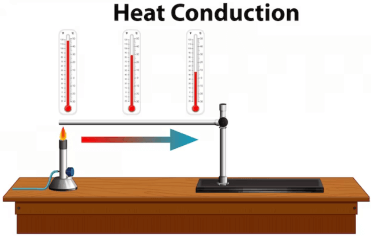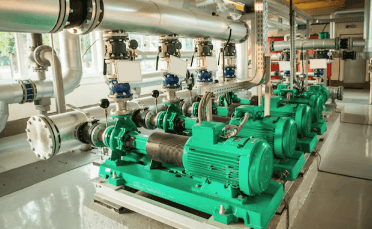Question
a.
0.224
b.
0.706
c.
2.224
d.
3.224
Posted under Heat Transfer
Interact with the Community - Share Your Thoughts
Uncertain About the Answer? Seek Clarification Here.
Understand the Explanation? Include it Here.
Q. In a surface condenser, the water flowing through a series of tubes at the rate of 200 kg/hr is heated from 15 degree Celsius to 75 degree Celsius. The steam condenses on the...
Similar Questions
Explore Relevant Multiple Choice Questions (MCQs)
Q. For evaporators and condensers, for the given conditions, the logarithmic mean temperature difference for parallel flow is
View solution
Q. Water (specific heat = 4 k J/kg K) enters a cross flow exchanger (both fluids unmixed) at 15 degree Celsius and flows at the rate of 7.5 kg/s. It cools air (C P = 1 k J/kg K) flowing at the rate of 10 kg/s from an inlet temperature of 120 degree Celsius. For an overall heat transfer coefficient of 780 k J/m² hr degree and the surface area is 240 m², determine the NTU
View solution
Q. Pick the odd one out.
View solution
Q. A cross flow type air heater has an area of 50 cm². The overall heat transfer coefficient is 100 W/m² K and heat capacity of both hot and cold stream is 1000 W/m K. The value of NTU is
View solution
Q. After expansion from a gas turbine, the hot exhaust gases are used to heat the compressed air from a compressor with the help of a cross flow heat exchanger of 0.8 effectiveness. What is the number of transfer units of the heat exchanger?
View solution
Q. E – NTU method is particularly useful in thermal design of heat exchangers when
View solution
Q. The engine oil at 150 degree Celsius is cooled to 80 degree Celsius in a parallel flow heat exchanger by water entering at 25 degree Celsius and leaving at 60 degree Celsius. Estimate the number of transfer units
View solution
Q. In a surface condenser, the water flowing through a series of tubes at the rate of 200 kg/hr is heated from 15 degree Celsius to 75 degree Celsius. The steam condenses on the outside surface of tubes at atmospheric pressure and the overall heat transfer coefficient is estimated at 860 k J/m² hr degree. Find the number of transfer units of the heat exchanger. At the condensing pressure, stream has saturation temperature 0f 100 degree Celsius and the latent heat of vaporization is 2160 k J/kg. Further, the steam is initially just saturated and the condensate leaves the exchanger without sub-cooling i.e. only latent heat of condensing steam is transferred to water. Take specific heat of water as 4 k J/kg K
View solution
Q. NTU is a number of transfer units, dimensionless parameter defined as
View solution
Q. When two fluids of the heat exchanger are separated by a plane wall, the thermal resistance comprises
(i) Convection resistance due to the fluid film at the inside surface
(ii) Conduction resistance
(iii) Convection resistance due to the fluid film at the outside surface
Identify the correct option
View solution
Q. Figure represents the block diagram of a heat exchanger. There were some aspects in the design and performance analysis of a heat exchanger. Identify the correct one
View solution
Q. The heat loss from unpainted aluminum side of a house has been calculated on the presumption that overall coefficient of heat transfer is 5 W/m² K. Later, it was discovered that the air pollution levels are such that fouling factor on this side is of the order of 0.0005 m² K/W. Find overall heat transfer coefficient of dirty side
View solution
Q. What is the value of fouling factor for engine exhaust?
View solution
Q. What is the value of fouling factor for industrial liquids?
View solution
Q. After being in service for a period of six months, a heat exchanger transforms 10% less heat than it does what new. Determine the effective fouling factor in terms of its clean overall heat transfer coefficient. It may be presumed that the heat exchanger operates between the same temperature differentials and that there is no change in the effective surface area due to scale build up
View solution
Q. In a counter flow heat exchanger, water flowing through a tube of 10 cm inner diameter is heated by steam condensing on the outside of the tube. The convective film coefficient on the water and steam side are estimated to be 12000 and 20000 k J/m² hr degree. Neglecting tube thickness and its resistance to heat flow, workout the overall heat transfer coefficient for the heat exchanger
View solution
Q. A heat exchanger to preheat oil for a furnace was designed without considering the possibility of scale formation, and the overall heat transfer coefficient based on the fuel oil side was 3200 k J/m² hr degree. What would be the corrected coefficient of heat transfer if a fouling factor of 0.00025 m² hr degree/k J for the fuel oil is taken into account?
View solution
Q. A copper pipe (k = 350 W/m K) having inner diameter of 1.75 cm and 2.0 cm outside diameter conveys water and the oil flows through the annular passage between this pipe and a steel pipe. On the water side, the film coefficient is 4600 W/m² K and the fouling factor is 0.00034 m² K/W. The corresponding values for the oil side are 1200 W/m² K and 0.00086 m² K/W. Estimate the overall heat transfer coefficient between the oil and water
View solution
Q. Unit of fouling factor is
View solution
Q. The rear window of an automobile is made of thick glass i.e. AB = 5 mm and thermal conductivity is 0.8 W/m degree. To defrost this window, a thin transparent film type heating element has been fixed to its inner surface. For the conditions given below, determine the electric power that must be provided per unit area of window if a temperature 5 degree Celsius is maintained at its outer surface. Interior air temperature and the corresponding surface coefficient are 20 degree Celsius and 12 W/m² degree. Surrounding air temperature and the corresponding surface coefficient are – 15 degree Celsius and 70 W/m² degree. Electric heater provides uniform heat flux
View solution
Recommended Subjects
Are you eager to expand your knowledge beyond Heat Transfer? We've handpicked a range of related categories that you might find intriguing.
Click on the categories below to discover a wealth of MCQs and enrich your understanding of various subjects. Happy exploring!








